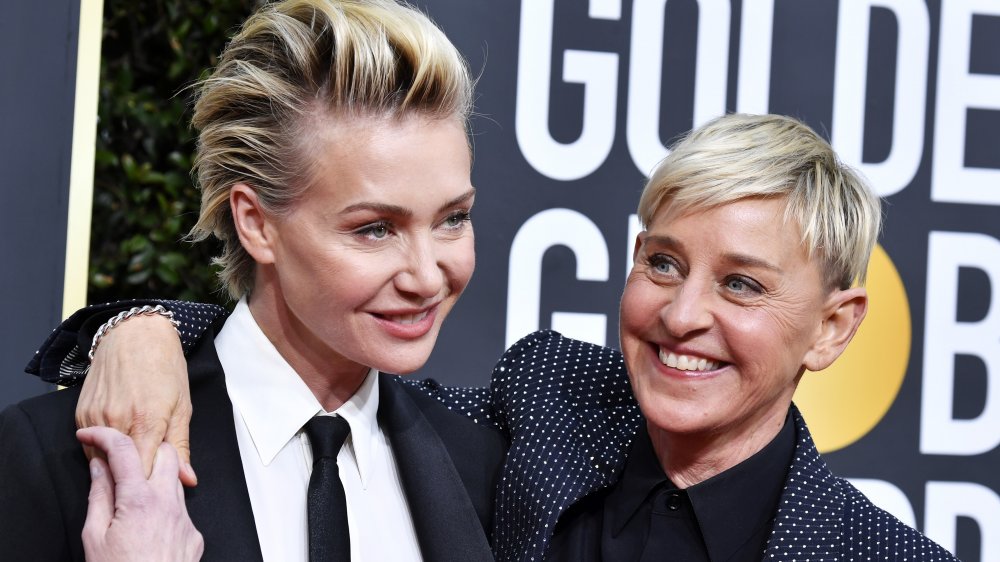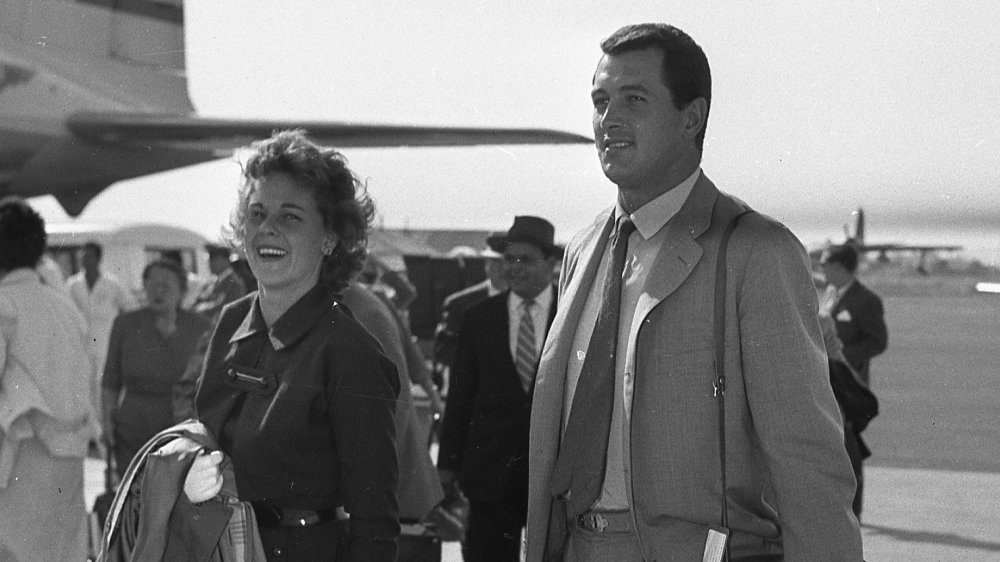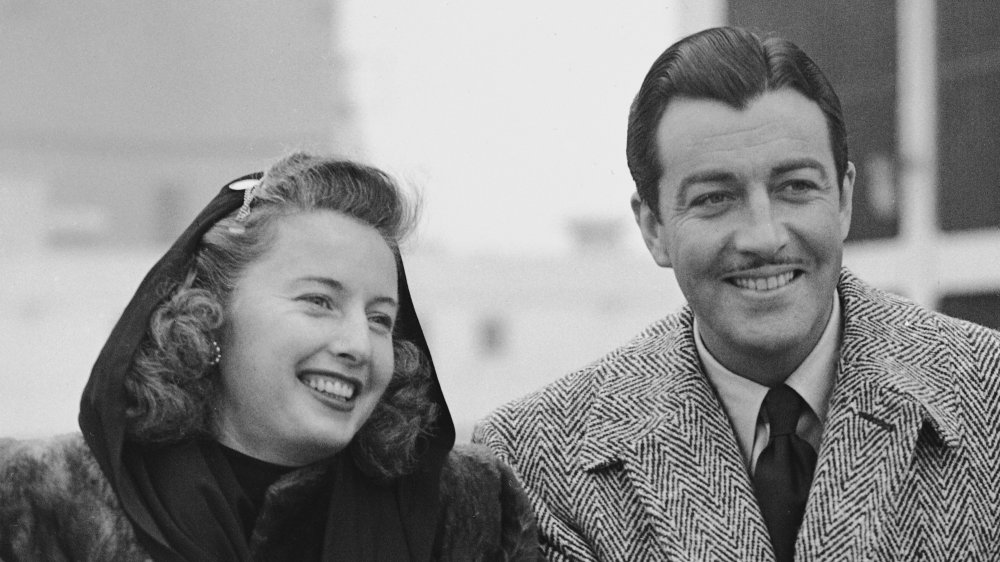The Sad Truth About Hollywood's 'Lavender Marriages'
Love and marriage. Do they really go together like a horse and carriage? (Did Sinatra lie to us?) Ellen DeGeneres and Portia de Rossi (pictured above), Neil Patrick Harris and David Burtka, Lily Tomlin and Jane Wagner, and George Takei and Brad Altman all think so. All of them high-profile performers and celebrities, all of them couples in same-sex marriages, according to Pop Sugar. It wasn't that long ago that news of this kind — men marrying men, women marrying women — would have been actual news. Now, it's news because it involves celebrity, the same way it was news when Sinatra married Mia Farrow. (Or any of his other wives, for that matter.) Prior to 2015, it would have been scandalous, not to mention illegal, but the 2015 Supreme Court ruling in Obergefell v. Hodges said that states were no longer allowed to ban same-sex marriage, that same-sex marriages must be recognized legally nationwide, and that married same-sex couples had the same legal rights as married heterosexual couples, as History reports.
Yes, it took a Supreme Court ruling. Many factors were part of the sea change this represented: understanding of same-sex attraction, changing societal mores regarding the nature of marriage itself. It wasn't always so (though, to be fair, there are still parts of the country that disagree with the idea of same-sex anything at all).
Rock Hudson's marriage is usually considered "lavender"
For decades — most of American history — same-sex marriage was literally unthinkable, as was same-sex attraction — a perversion, a sickness, shameful, "the love that dare not speak its name," in the words of Oscar Wilde's lover, Lord Alfred Douglas.
It's no secret that fish gotta swim and birds gotta fly, and people are people wherever you go. In a society that celebrates celebrity, and regarded same-sex attraction as a perversion, a movie stae (just as a for-instance) might be in big trouble over same-sex anything at all. And so they were.
Some refer to it as a golden age of filmmaking, and no doubt the early days of Hollywood produced some nifty pieces of cinematic art. But those were also the days of studios controlling nearly every aspect of an actor's life, especially if that actor wanted to be (or already was) a major star. "Fixers" like Eddie Mannix made sure that stars stayed out of the news cycle, especially if they were being, well, naughty, says Vice, with threats, promises, bribes — whatever it took.
Besides paying off (or threatening) the press that promised (or threatened) to expose stars who were not strictly heterosexual, sometimes the studios would latch onto the idea of marrying someone off, whether they wanted to be or not. They were called "lavender marriages," a sort of matrimonial camouflage to throw busybodies off the scent of what would have been an unthinkable scandal.
Some claim the Stanwyck-Taylor marriage was lavender
The studios had financial leverage, with the addition of "morals clauses" in contracts: performers could be dismissed if they engaged in behavior that was judged "scandalous," that would alienate the viewing public — something that would "forfeit the respect of the public." Say, for instance, same-sex relationships. (Also pregnancies outside of marriage, affairs, interracial romances, abortions — it was quite a list.) The details of the arranged marriages were always very hush-hush — that was kind of the point — and so at this historic juncture a lot of it's conjecture. Rumors. Connect the dots.
Rock Hudson is usually the first one anyone mentions. As History Daily reports, the tabloids of the times were going to drag Hudson from his not-terribly-unsuspected closet. On the cusp of the big reveal, Hudson's agent arranged for Rock to marry Phyllis Gates, the agent's secretary. The couple stayed married for three years, says Biography; Hudson never publicly acknowledged his homosexuality, according to History; Gates always insisted that it was a bona-fide marriage.
There were plenty of rumors of plenty of others — Barbara Stanwyck (a lesbian) who married Robert Taylor (a homosexual), thereby taking both of them out from under the microscope. "At the conclusion of the wedding ceremony," reports History Daily, "Taylor refused to kiss Stanwyck and went home to his mother's house for the night."
A time of great storytelling on the big screen. Human relations? Not so much.


